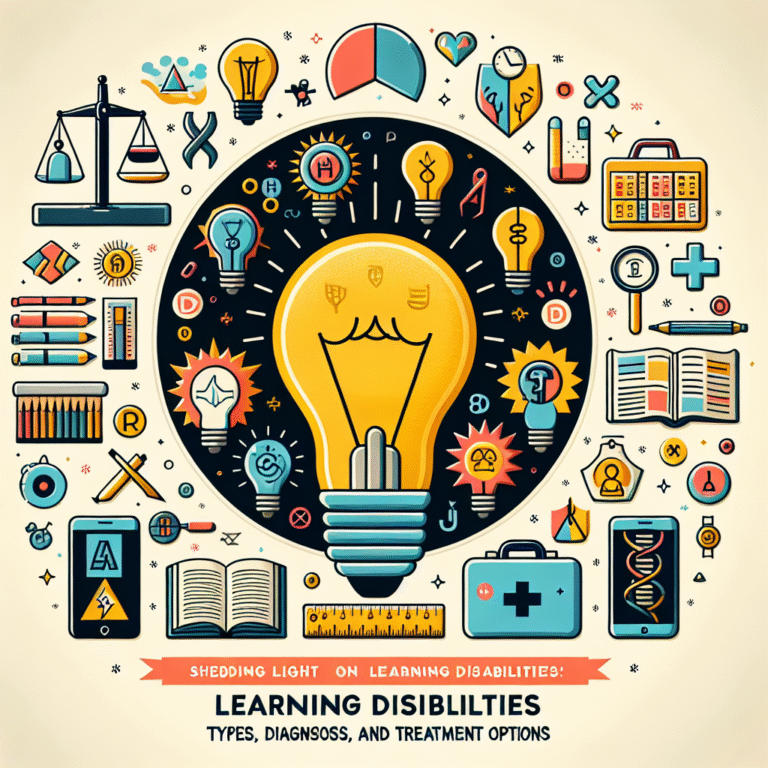
From Dogs to Cats: Exploring the Mental Health Benefits of Therapy Animals
Introduction
In today’s fast-paced world, the significance of mental health has gained unprecedented attention. With the increasing prevalence of stress, anxiety, and depression, individuals are constantly seeking effective and accessible methods for emotional healing. One of the most heartwarming and transformative developments in mental health care is the utilization of therapy animals. From Dogs to Cats: Exploring the Mental Health Benefits of Therapy Animals not only broadens our understanding of these furry companions but also serves as a gateway to discovering the profound impact they can have on our emotional well-being.
Therapy animals, encompassing a wide array of species but predominantly dogs and cats, provide comfort, companionship, and relief to those in distress. They are often employed in therapeutic settings, schools, hospitals, and even homes, bridging the gap between emotional turmoil and healing. This article aims to delve deep into the compelling world of therapy animals, exploring their remarkable benefits, real-world applications, and how they can be pivotal in enhancing mental health.
The Essence of Therapy Animals
What Are Therapy Animals?
Therapy animals are trained to provide emotional support and comfort to individuals facing various psychological challenges. Unlike service animals, which are trained to perform specific tasks for individuals with disabilities, therapy animals focus on emotional connection and companionship. They are certified and often involved in structured therapy sessions or visits to hospitals, nursing homes, schools, and community centers.
The Science Behind Animal-Assisted Therapy
Research has shown that interaction with animals can trigger significant biochemical responses in humans, including the release of oxytocin—a hormone associated with bonding and reducing stress levels. When individuals engage with therapy animals, the reduction of cortisol levels (the stress hormone) and the increase of serotonin levels (the feel-good hormone) occur, leading to improved mental health outcomes.
The Power of Unconditional Love
One of the most compelling aspects of therapy animals’ influence is their capacity to provide unconditional love and companionship. Their presence alone can evoke feelings of calmness and security, reminding us of the simplicity and purity of emotional connection. This aspect becomes especially crucial for individuals dealing with loneliness, depression, or anxiety—often finding solace in the gentle nudges or calming purrs of a therapy animal.
From Dogs to Cats: A Closer Look at Therapy Animals
The Role of Dogs in Therapy
A Snapshot of Canine Capabilities
Dogs have long been considered man’s best friend, and their innate ability to bond with humans lends itself beautifully to the realm of therapy. Various case studies showcase how dogs help in reducing anxiety and improving social interaction—two critical components of mental well-being.
Case Study: Max’s Therapy Dog Experience
Max, a 28-year-old veteran struggling with PTSD, found solace in a therapy dog named Buddy. After a few sessions, Max reported a significant decline in anxiety levels. The comfort provided by Buddy allowed him to share his experiences openly during group therapy, fostering deeper connections with other veterans. This case exemplifies how dogs can help individuals navigate their emotional traumas with greater ease.
The Rising Popularity of Cats in Therapy
Cats: Small Wonders with Big Impact
While dogs have dominated the therapy animal scene, cats are making their mark with their unique ability to provide comfort. Their independent yet affectionate nature can appeal to those who might feel overwhelmed by the exuberance of dogs.
Case Study: Lucy’s Journey with Therapy Cats
Lucy, an elderly woman with advanced dementia, experienced increased agitation and confusion. After introducing therapy cats into her care routine, staff observed a notable change in her demeanor. The gentle purring and soft pawing of the cats often calmed her during episodes of distress. This case highlights that cats, with their calming presence, can be equally impactful in therapeutic settings.
Comparative Benefits of Dog and Cat Therapy
| Aspect | Dogs | Cats |
|---|---|---|
| Training | Typically require extensive training in obedience | Less formal training; focus is on temperament |
| Interaction Style | Highly interactive; need physical activity | More independent; enjoy calm, quiet interactions |
| Emotional Response | Highly responsive; offer enthusiasm and are often more engaging | Soothing presence; provide comfort through calm demeanor |
| Suitability | Ideal for physical and social interaction therapy | Best suited for quieter, introspective therapeutic scenarios |
From Dogs to Cats: Exploring the Mental Health Benefits of Therapy Animals reveals that both animals possess distinct qualities that can cater to varying emotional needs, making them invaluable allies in mental health support.
Emotional Healing Through Diverse Therapeutic Settings
Schools: Fostering a Calmer Learning Environment
In educational settings, therapy animals have emerged as essential tools in addressing student mental health. By reducing anxiety and improving focus, they pave the way for a more conducive learning environment.
Case Study: Paws for Learning Program
A middle school implemented a "Paws for Learning" initiative where students could spend time with therapy dogs during stressful exam preparation. Teachers reported that students demonstrated reduced anxiety levels, improved concentration, and higher academic performance after interacting with therapy animals. From Dogs to Cats: Exploring the Mental Health Benefits of Therapy Animals in educational settings illustrates the profound effect these interactions can have on young minds.
Hospitals: Alleviating Stress for Patients and Families
Therapy animals have proven to be invaluable in hospital settings, providing comfort to both patients and their families. Their mere presence can reduce anxiety levels prior to surgical procedures or during treatments.
Case Study: Canine Comfort in Cancer Care
At a major city hospital, therapy dogs were introduced to patients undergoing chemotherapy. The dogs provided emotional support during sessions, leading to reduced anxiety and even increased willingness to participate in treatment. Families reported feeling more at ease, highlighting how effective therapy animals can bridge the emotional gap in clinical environments.
Nursing Homes: Combatting Loneliness Among Seniors
Therapy animals are especially beneficial in nursing homes, combating the pervasive loneliness often felt by seniors. Their presence can evoke cherished memories, spark conversations, and create an uplifting atmosphere.
Case Study: Joyful Visits with Therapy Cats
In a nursing home, therapy cats made weekly visits to residents. Staff noted significant improvements in mood and social interaction during therapy sessions. Residents who previously isolated themselves began to participate in activities, sharing stories about their own pets from years past. This case underscores the emotional healing powers of cats, underscoring the theme of From Dogs to Cats: Exploring the Mental Health Benefits of Therapy Animals across demographics.
The Impact on Families
The benefits of therapy animals extend beyond individual therapy sessions; they also create a ripple effect, positively impacting families. When patients experience improved mental health through therapy animals, family members often notice a decrease in stress and anxiety as well. This mutually beneficial dynamic reinforces the value of therapy animals within family systems.
The Future of Therapy Animals
Expanding the Scope of Animal-Assisted Therapy
As the awareness of mental health challenges rises, the application of therapy animals could expand into unexplored territories. Areas like corporate well-being programs, prisons, and rehabilitation centers are prime candidates for introducing therapy animals to help mitigate stress and improve overall morale.
Diversity in Species
Beyond the traditional options of dogs and cats, other animals such as rabbits, horses, and even birds can contribute significantly to therapy practices. The uniqueness of different species can cater to various emotional needs, thereby extending the reach of animal-assisted therapy.
Training and Certification
For therapy animals to be effective, proper training and certification programs must continue to develop. Organizations dedicated to the welfare and training of therapy animals can ensure that they are suited for their roles, providing the necessary skill sets to be effective in various settings.
Conclusion
From Dogs to Cats: Exploring the Mental Health Benefits of Therapy Animals allows us to appreciate the gentle power of these companions in our quest for mental well-being. Whether through the loyal gaze of a therapy dog or the subtle purr of a cat, the impact of these animals on emotional healing is undeniable. They not only alleviate our burdens but also remind us of the innate joy that comes from companionship.
The inclusion of therapy animals can serve as a catalyst for broader mental health initiatives, urging society to view these animals as integral components of care. Let us take inspiration from the stories shared here and advocate for the incorporation of therapy animals in more areas of life, from hospitals to schools and beyond.
In a world increasingly in need of connection and support, therapy animals are proving to be essential companions on our journey toward mental health recovery and sustainable well-being.
FAQs
What qualifications do therapy animals need?
Therapy animals typically undergo training to prepare them for interactions with various populations. They should be well-socialized, calm, and responsive to commands, ensuring they can provide comfort effectively.How do I find a therapy animal?
Many organizations train and certify therapy animals for specific settings. Research local therapy animal programs or consider contacting hospitals, schools, or therapeutic facilities to learn more about available services.Are therapy animals the same as emotional support animals (ESAs)?
No, therapy animals work with various individuals in therapeutic settings, while emotional support animals provide comfort to their owners but may not have the same training or certifications.Can therapy animals help with specific mental health conditions?
Yes, therapy animals have shown positive effects on a range of conditions, including anxiety, depression, PTSD, and even autism spectrum disorders, by offering emotional support and engaging individuals in calming interactions.- What types of animals can be therapy animals?
While dogs and cats are the most common therapy animals, other animals such as rabbits, horses, and even birds can also serve therapeutic roles, providing comfort and emotional support through their unique behaviors.
As you consider your mental health journey, remember the profound impact that therapy animals can have. From Dogs to Cats: Exploring the Mental Health Benefits of Therapy Animals reinforces the importance of love, companionship, and mitigated loneliness that these creatures provide—a true testament to the healing bond between humans and animals.














